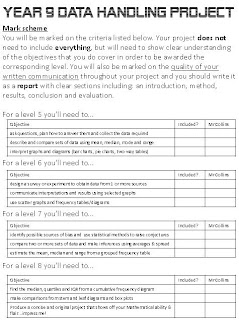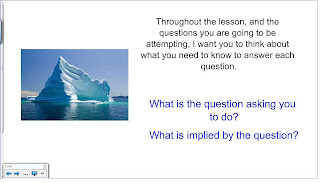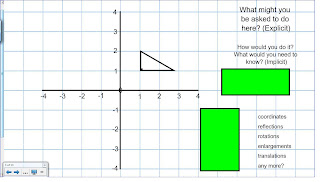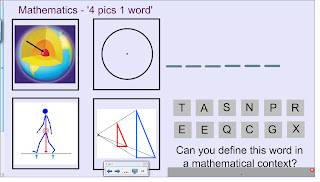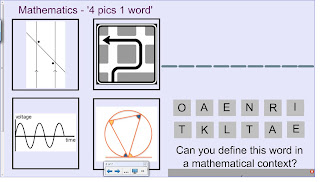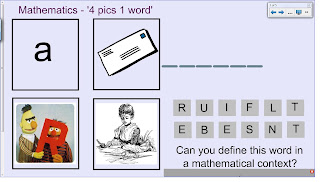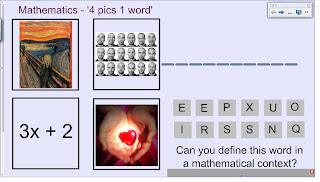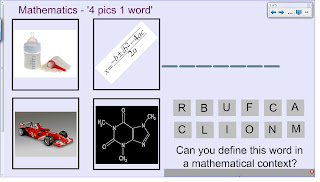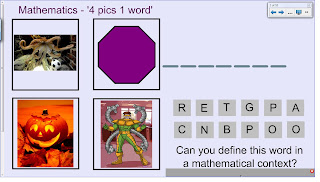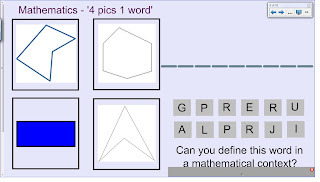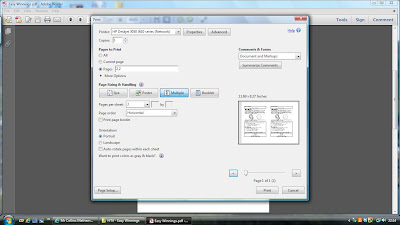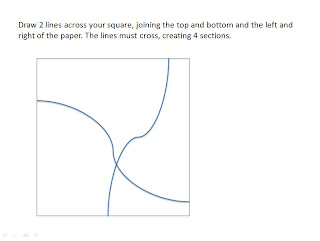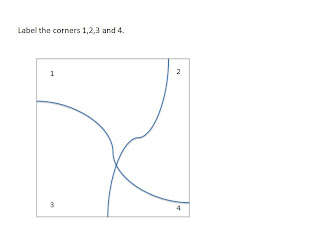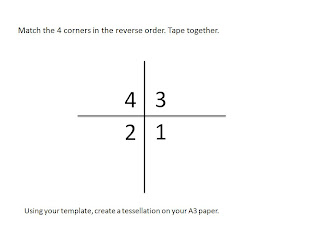This past week or so my Year 7 class have been looking at 3D shapes, nets, and constructions of shapes.
In order to give them a challenge/purpose for looking at 3D shapes etc I decided to set them a task of creating the packaging for a mini set of Pringles crisps. I set them the context that the manager of Pringles wanted to create a 'lunchbox' sized pack of Pringles and that he was looking for designs for the package of this box.
I got the idea from this resource uploaded on the TES.
Like the resource suggests the packaging must have been made using a single piece of A4 paper - to ensure the package is small enough to fit in lunchboxes and also saves on production costs etc.
I started the lesson by using my 3D shapes '4 words 1 pic' resource that I blogged about here. Then, having tweaked the above packaging resource slightly, gave the class a matching activity of some common 3D shapes and their relative nets to give them some ideas of what sort of packages they could create.
I naturally got some Pringles out then to model the sort of thing they needed to create and told them the basic measurements of a single Pringle, and then a stack of 5 Pringles for the 'mini-packet' they were creating.
The class were then given free reign of the type of packaging they wanted to create. I did however keep a list of success criteria on the board with the all things I wanted to see from their packaging (very much like the list in the resource but tweaked to include the number of edges, vertices and faces of their package).
As the students were working I went round the room checking the accuracy of their net designs and reminded them of the size of the Pringles they needed to package/house. I was impressed by how many students decided to create challenging packages - some were attempting cylinders, pentagonal prisms, trapezoids etc. There were a good amount of students that were doing cuboids too (differentiation by outcome here).
When the class got to the point where they were ready to build their 3D shape from their (checked) net I discussed with the class the need for tabs and how they would then stick their package together. I then gave them a Pringle each to use to ensure their 3D package could fit the crisp!
Here are some of the class' finished packages (some Pringles included!). As you can see I was mainly focusing on the class having a go at create a net and then creating their 3D shape - I wasn't too concerned with them actually designing the packaging, colouring it in, putting the logo on them etc etc.
A nice attempt at a triangular prism here
A cuboid, complete with an 'openable' lid
The student who decided to attempt the pentagonal prism. There were slight problems with this one when they cut the net out as the widths of the rectangular faces were not the same as the lengths of each side of the pentagon. I had a discussion with the student about this and he then 'trimmed' the pentagon as best he could to make it work.
Another cuboid example
A cuboid with Mr Pringles on it! This student finished a bit earlier than others and so was able to start putting his designs onto the package.
The students were very excited about actually using the Pringles to help them build their packages, oh...and getting to then eat them was a bit of a bonus for them.
![]()
An attempt at a trapezoid here, not as accurate as it could have been - again, issues here to do with the lengths of the sides of the faces when drawing the nets! Something I can go over with the class next lesson.
Here are all of the 3D shapes that were made in the lesson. Those that chose to attempt the cylinders were the least successful designs as the students lacked the knowledge in terms of the circumference of the circular faces and the relation to this and the length of the rectangular face. However, the fact they were accurately constructing the circles built on what we had done in previous lessons and they used the length of a Pringle to determine the diameter/radius of the circles they needed to draw.
After these 2 lessons looking at 3D shapes and their packages for the Pringles we looked at creating more polyhedra by using my class set of Polydron. With the exception of the polyhedra that used the pentagons and hexagons (I didn't have these in my polydron set) I used this resource from the TES to get the students to discover Euler's relation between the edges (E), vertices (V) and faces (F) of the polyhedra they created.
I made good use of the website suggested in the description of the resource to print off the nets of the polyhedra mentioned on the w/sheet. This meant that students were either a) using the Polydron to create the shapes and identify the F, E, V b) making the polyhedra from the nets and then identifying the F, E, V or c) looking at the images on the w/sheet to work out the F, E, V for each.
1 of the students then managed to correctly identify Euler's relation between the F, E and V - I was extremely impressed here and lot of VIVOs (my school's rewards system) were given! At the end of the lesson, and for the plenary, I asked said student to tell the class what he had found, I wrote it on the board and then asked the rest of the class to see if it worked with the F, E and V they had identified themselves. Cue LOADS of 'oh yeah' moments from the rest of the class - this moment in class was one of those moments I have had when I feel the whole class have just 'clicked' or had that 'lightbulb' moment - great stuff!
In order to give them a challenge/purpose for looking at 3D shapes etc I decided to set them a task of creating the packaging for a mini set of Pringles crisps. I set them the context that the manager of Pringles wanted to create a 'lunchbox' sized pack of Pringles and that he was looking for designs for the package of this box.
I got the idea from this resource uploaded on the TES.
Like the resource suggests the packaging must have been made using a single piece of A4 paper - to ensure the package is small enough to fit in lunchboxes and also saves on production costs etc.
I started the lesson by using my 3D shapes '4 words 1 pic' resource that I blogged about here. Then, having tweaked the above packaging resource slightly, gave the class a matching activity of some common 3D shapes and their relative nets to give them some ideas of what sort of packages they could create.
I naturally got some Pringles out then to model the sort of thing they needed to create and told them the basic measurements of a single Pringle, and then a stack of 5 Pringles for the 'mini-packet' they were creating.
The class were then given free reign of the type of packaging they wanted to create. I did however keep a list of success criteria on the board with the all things I wanted to see from their packaging (very much like the list in the resource but tweaked to include the number of edges, vertices and faces of their package).
As the students were working I went round the room checking the accuracy of their net designs and reminded them of the size of the Pringles they needed to package/house. I was impressed by how many students decided to create challenging packages - some were attempting cylinders, pentagonal prisms, trapezoids etc. There were a good amount of students that were doing cuboids too (differentiation by outcome here).
When the class got to the point where they were ready to build their 3D shape from their (checked) net I discussed with the class the need for tabs and how they would then stick their package together. I then gave them a Pringle each to use to ensure their 3D package could fit the crisp!
Here are some of the class' finished packages (some Pringles included!). As you can see I was mainly focusing on the class having a go at create a net and then creating their 3D shape - I wasn't too concerned with them actually designing the packaging, colouring it in, putting the logo on them etc etc.
A nice attempt at a triangular prism here
A cuboid, complete with an 'openable' lid
The student who decided to attempt the pentagonal prism. There were slight problems with this one when they cut the net out as the widths of the rectangular faces were not the same as the lengths of each side of the pentagon. I had a discussion with the student about this and he then 'trimmed' the pentagon as best he could to make it work.
Another cuboid example
A cuboid with Mr Pringles on it! This student finished a bit earlier than others and so was able to start putting his designs onto the package.
The students were very excited about actually using the Pringles to help them build their packages, oh...and getting to then eat them was a bit of a bonus for them.
An attempt at a trapezoid here, not as accurate as it could have been - again, issues here to do with the lengths of the sides of the faces when drawing the nets! Something I can go over with the class next lesson.
Here are all of the 3D shapes that were made in the lesson. Those that chose to attempt the cylinders were the least successful designs as the students lacked the knowledge in terms of the circumference of the circular faces and the relation to this and the length of the rectangular face. However, the fact they were accurately constructing the circles built on what we had done in previous lessons and they used the length of a Pringle to determine the diameter/radius of the circles they needed to draw.
After these 2 lessons looking at 3D shapes and their packages for the Pringles we looked at creating more polyhedra by using my class set of Polydron. With the exception of the polyhedra that used the pentagons and hexagons (I didn't have these in my polydron set) I used this resource from the TES to get the students to discover Euler's relation between the edges (E), vertices (V) and faces (F) of the polyhedra they created.
I made good use of the website suggested in the description of the resource to print off the nets of the polyhedra mentioned on the w/sheet. This meant that students were either a) using the Polydron to create the shapes and identify the F, E, V b) making the polyhedra from the nets and then identifying the F, E, V or c) looking at the images on the w/sheet to work out the F, E, V for each.
1 of the students then managed to correctly identify Euler's relation between the F, E and V - I was extremely impressed here and lot of VIVOs (my school's rewards system) were given! At the end of the lesson, and for the plenary, I asked said student to tell the class what he had found, I wrote it on the board and then asked the rest of the class to see if it worked with the F, E and V they had identified themselves. Cue LOADS of 'oh yeah' moments from the rest of the class - this moment in class was one of those moments I have had when I feel the whole class have just 'clicked' or had that 'lightbulb' moment - great stuff!




